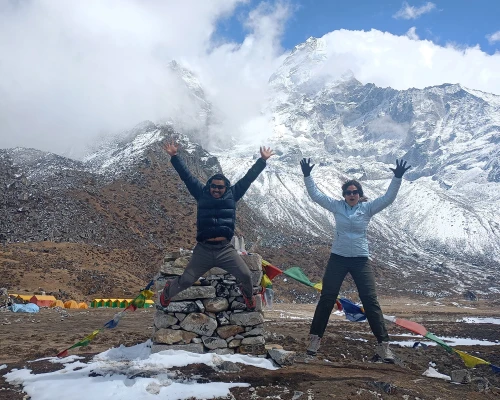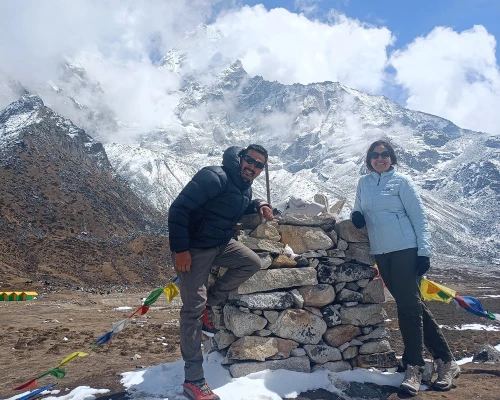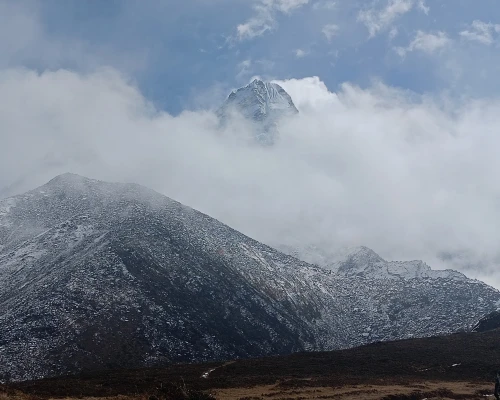Standing deep in the Khumbu region of Nepal's Koshi Province, surrounded by the giant Himalayas, lies the mighty Ama Dablam. Unlike its towering neighboring peaks, Everest, Lhotse, and Cho Oyu, Ama Dablam stands at 6,812 meters and has a distinctive pyramid shape. Hence, it earned the nickname "Matterhorn of the Himalayas" due to its prominent sharp ridges and similarity to Mount Matterhorn of the Alps. For trekkers on a journey of the classic Everest Base Camp Trek, this majestic peak's presence remains constant while offering magnificent views. Besides that, in Sherpa culture, this mountain is called "The Mother's Necklace" as the sharp ridges of the mountain resemble a mother's arms protecting and embracing her child. Likewise, the hanging glacier's shape resembles a Sherpa woman's traditional pendant, which has Buddhist deities' figures. Apart from that, this peak attracts global climbers for the famous Ama Dablam Expedition.
The Ama Dablam Expedition will begin with following the same epic route the first climbers conquered in 1961 – the southwest ridge. It is an unforgettable adventure that stretches for a whole month, with most of that time dedicated to acclimatization. Why? Because of altitude sickness and bone-chilling temperature risk. It's all about getting climbers' body get ready for the ultimate challenge that awaits!
This epic journey commences in Kathmandu, Nepal's vibrant capital city. After sorting out permits and grabbing all the gear needed, a scenic flight whisks you away to Lukla, the gateway to the Everest region. This charming village nestled in the Khumbu region is where the real adventure begins.
From Lukla, the trek to Ama Dablam winds through breathtaking valleys, across rickety suspension bridges, and past traditional Sherpa villages adorned with colorful prayer flags. Lush forests give way to the mighty Khumbu Glacier, a glimpse into the raw power of the Himalayas. And above it all? The mighty picture of Mt. Everest will constantly entertain you throughout this memorable journey.






 based on 1 review
based on 1 review